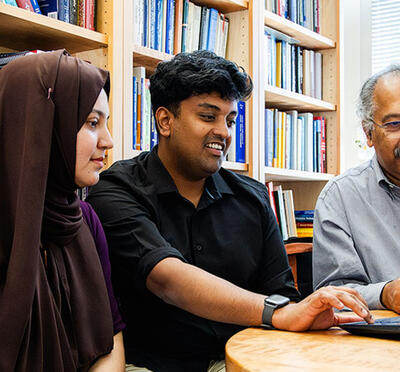The Gaulke Center for Marine Innovation and Technology, established in November 2023 with a $20 million gift from Oregon State University alumni Judy and Mike Gaulke, has found its inaugural leader. Andone C. Lavery begins her tenure as the center’s executive director in June.
The center will lead and support innovative research and technology development to help society better understand, protect, and utilize the ocean and its environment. In addition to her role as executive director, Lavery will serve as the Michael and Judith Gaulke Chair in Ocean Innovation and hold a joint faculty appointment in the colleges of Engineering and Earth, Ocean, and Atmospheric Sciences.
“We have had the opportunity to sail, dive, and swim in oceans around the world, and we have seen dramatic changes within our own lifetime — from the disappearance of sharks to coral bleaching,” Mike Gaulke said. “From the massive worldwide problem of junk in the ocean to the opportunity of harnessing sustainable energy, there are so many challenges to address. We believe OSU is the ideal place to invest in creating solutions, and we hope others will join us.”
Lavery comes to Oregon State from the Woods Hole Oceanographic Institution, where she has worked since 2002, first as a staff scientist and, since May 2022, as chair of the Department of Applied Ocean Physics and Engineering.
With research interests falling broadly into the fields of acoustical oceanography, estuarine/coastal/urban acoustics, and ecosystem and fisheries acoustics, Lavery will leverage her breadth of experience to lead the Gaulke Center in collaborative science with researchers throughout Oregon State to meet many of the goals laid out in the university’s new strategic plan, Prosperity Widely Shared.
“I’m impressed with the optimistic culture at Oregon State, and the university’s prioritization of, and commitment to, building on robotics, artificial intelligence and machine learning, data science, climate science, clean energy, and ocean health for sustainable prosperity in the state of Oregon and beyond,” Lavery said.
Expertise in ocean acoustics
Lavery earned her bachelor’s degree in mathematics from Cambridge University and her master of science and doctorate in physics from Cornell University. She was a postdoctoral scholar at WHOI from 1999 to 2001, where she was also an Office of Naval Research postdoctoral fellow in ocean acoustics from 2001 to 2002.
In addition to being a fellow of the Acoustical Society of America (2015) and the Oceanography Society (2024), Lavery served as president of the Oceanography Society from 2020 to 2022 and is currently vice president of the Acoustical Society of America. Among her numerous awards are the 2014 Medwin Prize in Acoustical Oceanography from the Acoustical Society of America; the 2017 Munk Award from the Oceanography Society, ONR, and the Oceanographer of the Navy; the 2018 Edward O. Wilson Biodiversity Technology Pioneer Award; and the 2021 W. Van Clark Chair for Excellence in Oceanography at WHOI.
Lavery’s specific technical interests include mid- and high-frequency acoustic scattering and propagation in discrete and random media, developing physics-based acoustic scattering models for marine organisms and small-scale fluid processes, performing laboratory measurements for validating scattering models, developing instruments and applying signal processing methods for improved acoustic remote sensing of the ocean.
“The Gaulke Center is a tremendous opportunity to catalyze teams and advance ocean exploration and collaboration” Lavery said. “I want to build a welcoming and dynamic hub for all OSU staff and students interested in advancing ocean innovation and technology.”
Priorities for Gaulke Center
Lavery’s priorities are rapidly building a center that can support access to the sea, delivering seed funding for high-risk and innovative ocean technology development, accelerating the transition of technology developed for ocean research into technology for ocean solutions, hosting industry partners, strengthening the ocean technology work force, and supporting students interested in ocean innovation and technology.
“Our future lies in the ocean, and it’s very clear that we need to change how we care for it,” Mike Gaulke said. “Marine sciences can help, and it’s very exciting to see how advanced technologies can provide tools and approaches for addressing problems.”



